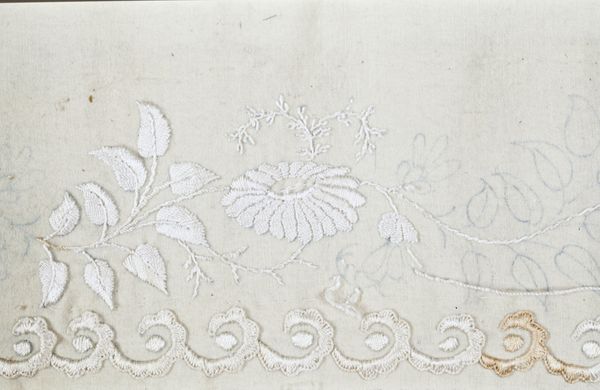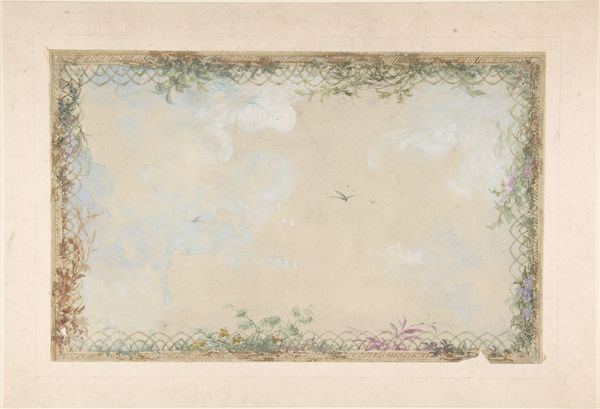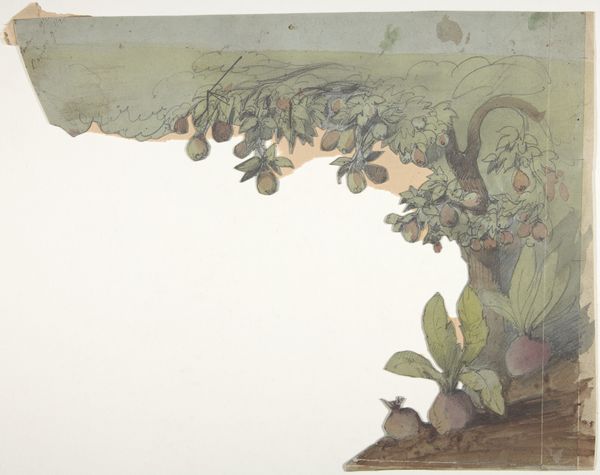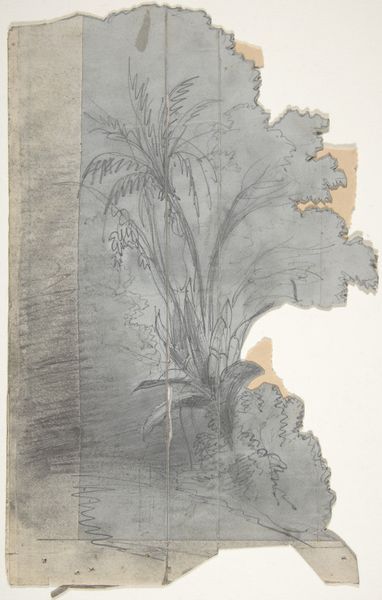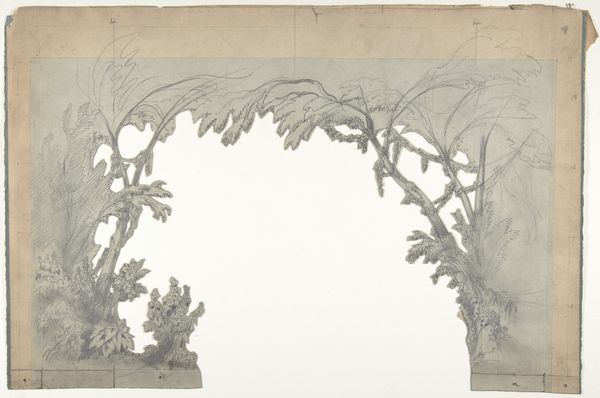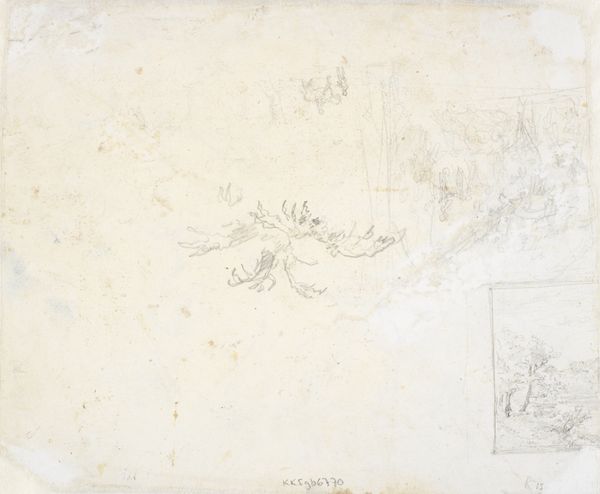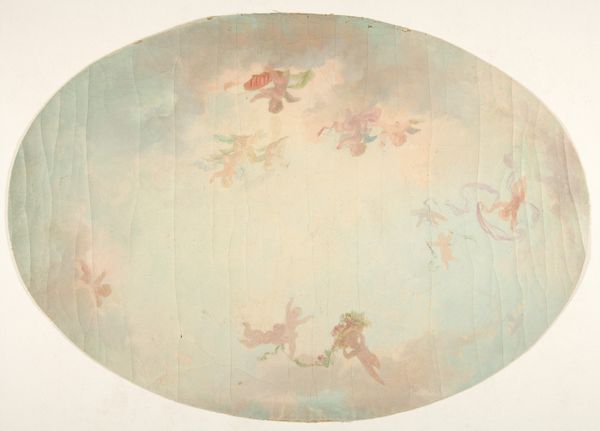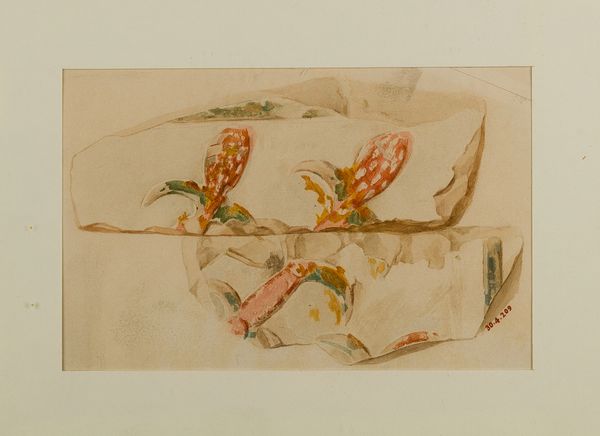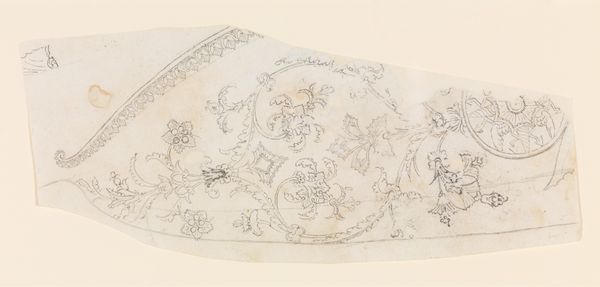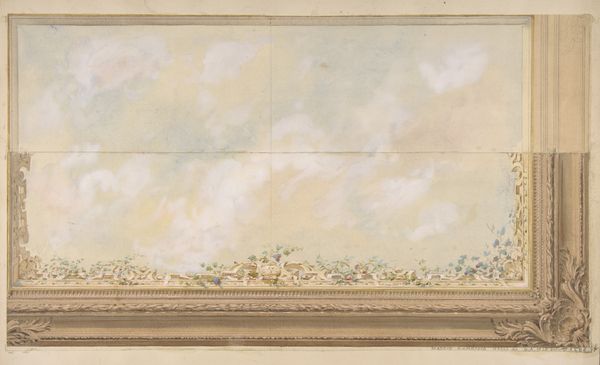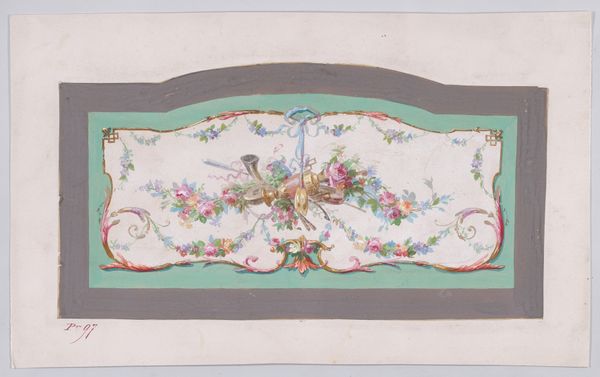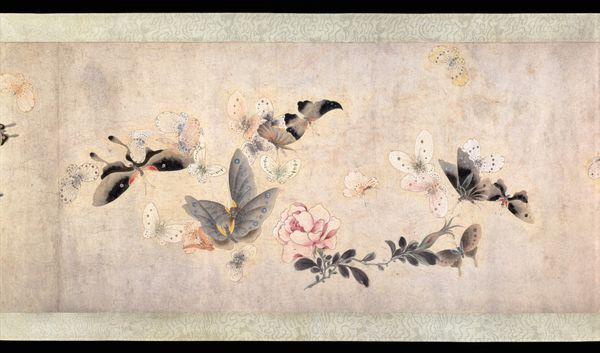
painting, watercolor, hanging-scroll, ink
#
painting
#
asian-art
#
landscape
#
ukiyo-e
#
watercolor
#
hanging-scroll
#
ink
#
coloured pencil
#
watercolor
Dimensions: 11 1/2 x 23 3/4 in. (29.21 x 60.33 cm) (painting)
Copyright: Public Domain
Matsumura Keibun created this painting of "Yellow Water Lilies" using ink and color on paper in the late 18th or early 19th century. Keibun lived during the Edo period, a time marked by relative peace and flourishing of the arts in Japan. This was also a time of strict social hierarchy, where artists like Keibun, though respected, occupied a specific place within the class structure. He belonged to the merchant class, which, despite its economic power, was considered lower than the samurai or aristocratic elite. The painting might be seen as a reflection of Keibun's personal experiences and his engagement with the natural world. The choice of water lilies, often symbols of purity and enlightenment in Buddhist traditions, could be interpreted as an expression of inner peace or spiritual longing. Keibun’s ability to capture the delicate balance and harmony of nature invites us to consider our relationship with the environment. It is a subtle but powerful reflection on life, resilience, and the quiet beauty.
Comments
minneapolisinstituteofart about 2 years ago
⋮
Matsumura Keibun specialized in bird-and-flower paintings. His light, seemingly spontaneous style, belies his considerable skill in handling the brush. Typical of paintings by Shijo_ school artists, Keibun gently introduced elements of Western realism into his works. Here, for example, he depicted taro leaves in various states of unfurling.
Join the conversation
Join millions of artists and users on Artera today and experience the ultimate creative platform.

